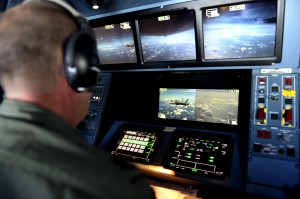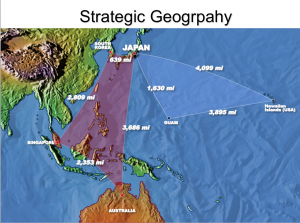2015-07-12
Since the GAO blocked the USAF buying the A300MRTT as the next generation tanker, the USAF configured aircraft has won every competition outside of the United States.
The latest country to join the Airbus tanker fleet is South Korea.
In late June, South Korea announced that they would buy four Airbus tankers with delivery starting in 2019.
It is clear that the operational experience of Australia with the KC-30A and the selection of the Airbus tanker by Singapore played an important role in the South Korean decision.
And Australia has decided to add to its fleet of KC-30As as well.
(Video is of KC-30A operating in Iraq operation with Air Marshal Brown onboard who is commenting on the aircraft and the squadron).
The fleet will expand to 7 with the decision to modify 2 A330s.
According to an Airbus Defence and Space press release on July 1, 2015:
In RAAF service the A330 MRTT is equipped with the Airbus Refuelling Boom System (ARBS), two underwing hose-and-drogue refuelling pods used to refuel RAAF F/A-18 and other fighters, and a Universal Aerial Refuelling Receptacle Slipway Installation (UARRSI) allowing it to be refuelled itself from another tanker.
The refuelling boom is now in service with RAAF and has been used to refuel other KC-30A aircraft and the E-7A Wedgetail.
The KC-30A is combat-proven in the Middle East where it refuelled a variety of Australian & Coalition aircraft.
Airbus Defence and Space Head of Sales & Marketing, Military Aircraft, Antonio Rodriguez Barberan said: “We deeply appreciate the RAAF’s long-term support of the development of the A330 MRTT since launch and we thank the Commonwealth of Australia for its continued faith in our company and its products.”
Much of the press surrounding the South Korean decision focused on the Boeing-Airbus rivalry and that Airbus won.
Although true, it misses the strategic point.

The Airbus tanker is maturing, is in use with the Aussies and is the tanker of choice for all Air Forces who have made decisions on tankers since the early Japanese and Italian decisions for an older variant of the 767 tanker.
This includes the USAF.
That decision was blocked on GAO and political grounds; not a consideration for the Aussies, for example, who picked what they believed to be the best platform for the task.
Since the GAO stands for the Government Accountability Office, who is going to hold them accountable?
Now the Aussies, the South Koreans, and Singaporeans will be flying the same tanker and will have a fleet of 17 tankers, which can operate in what we have called the strategic quadrangle operating over the Western Pacific.
This will enable US aircraft as well, as already seen in Iraq operations with four air forces flying Airbus tankers.
And for the USMC and the USAF, getting the Osprey certified for refueling by the A330MRTT is a very good idea.
Effectively managing security and defense from Hawaii back to Alaska and the West Coast of the United States is one key aspect of the challenge. The other is managing operational presence, capability, and effectiveness west of Hawaii. Hawaii is a key locus of the presence of U.S. forces in the Pacific.
Not only is it the physical seat of the U.S. Pacific Command, in charge of U.S. forces in the
Pacific, but also it is the home of significant naval and air capabilities, which are central to U.S. operational presence in the Pacific.

But moving out from Hawaii is the challenge, and here geography is crucial. In effect, U.S. forces operate in two different quadrants— one can be conceptualized as a strategic triangle and the other as a strategic quadrangle.
The first quadrant— the strategic triangle— involves the operation of American forces from Hawaii and the crucial island of Guam with the defense of Japan. U.S. forces based in Japan are part of a triangle of bases, which provide for forward presence and ability to project power deeper into the Pacific.
The second quadrant— the strategic quadrangle— is a key area into which such power needs to be projected. The Korean peninsula is a key part of this quadrangle, and the festering threat from North Korea reaches out significantly farther than the peninsula itself.
The continent of Australia anchors the western Pacific and provides a key ally for the United States in shaping ways to deal with various threats in the Pacific, including the PRC reach deeper into the Pacific with PRC forces. Singapore is a key element of the quadrangle and provides a key ally for the United States and others in the region. [ref]Robbin Laird, Ed Timperlake, and Richard Weitz: Rebuilding American Military Power in the Pacific: A 21st Century Strategy (Praeger, 2013).[/ref]
An air tanking fleet – especially a refuelable one – can provide an airborne base for operations for air assets – manned and unmanned – in the period ahead.
This will be especially important as allies can sort out their missions and support one another discretely in the air when discretion is necessary.
Also see the following:

